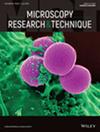Effects of Florivory on the Anatomy, Histochemistry and Resource Production of Flowers of Senna aversiflora (Herb.) H.S. Irwin and Barneby
Abstract
Florivory directly affects floral structures, especially petals and anthers. The physical damage to these whorls can alter the characteristics of the flowers, compromise their functions, and consequently impact fertility and reduce the reproductive success of the species. We provide the floral anatomical description of Senna aversiflora (Herb.) H.S. Irwin and Barneby. We measured various anatomical traits of petals and quantified the levels of chemical compounds and the pollen produced by intact and damaged flowers in order to identify characters associated with the plant-florivore interaction. We found that the epidermis (adaxial and abaxial surfaces) and mesophyll of the petals of healthy flowers were thicker when compared to damaged flowers. We infer that the smaller thickness of traits associated with the absence of characters with deterrent effect on herbivores and greater production of attractive/nutritive chemical compounds in relation to defense compounds contribute to making the species highly susceptible to florivory. Pollen production in damaged flowers did not differ between the different stages of floral development. However, florivory has a negative effect on the amount of pollen produced. Damaged flowers had less pollen than healthy flowers. We conclude that florivory in S. aversiflora exerts significant pressure on petal anatomy and resource production by flowers.



 求助内容:
求助内容: 应助结果提醒方式:
应助结果提醒方式:


